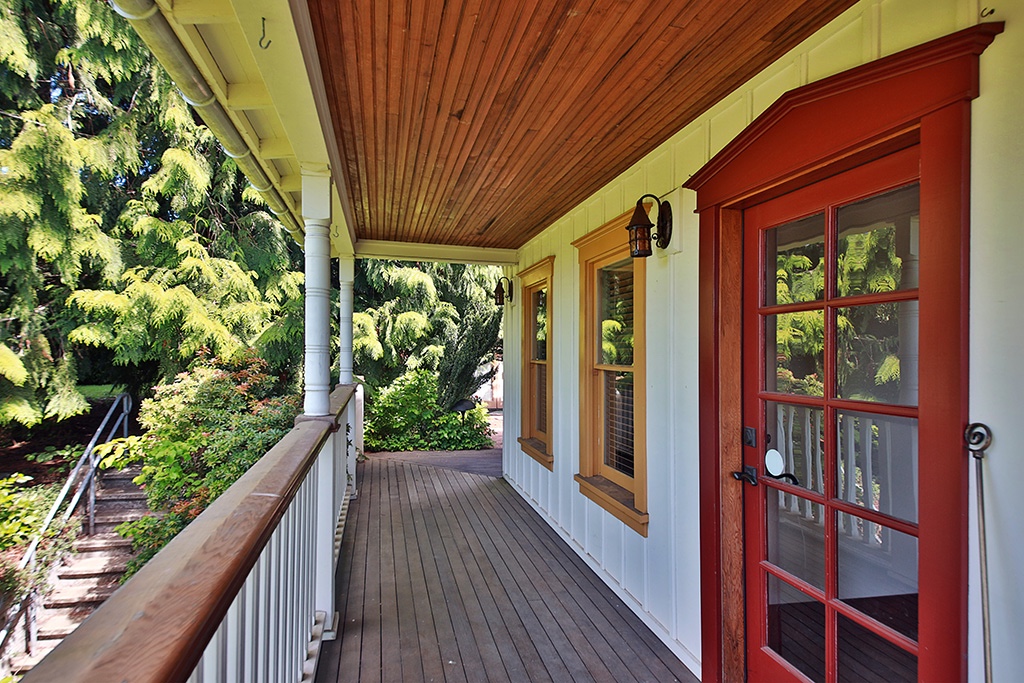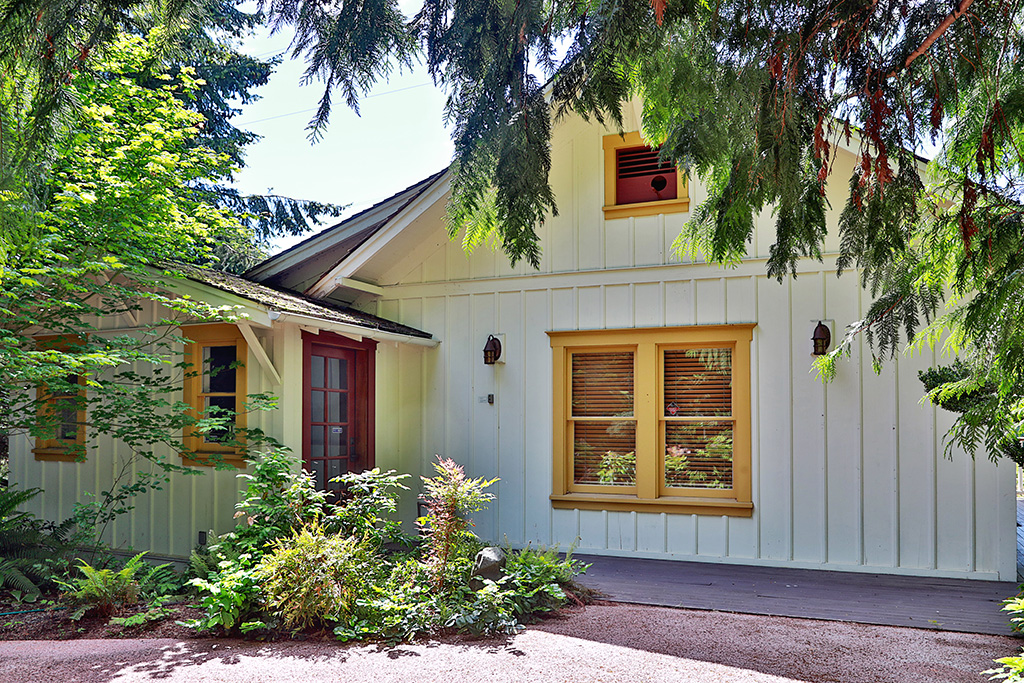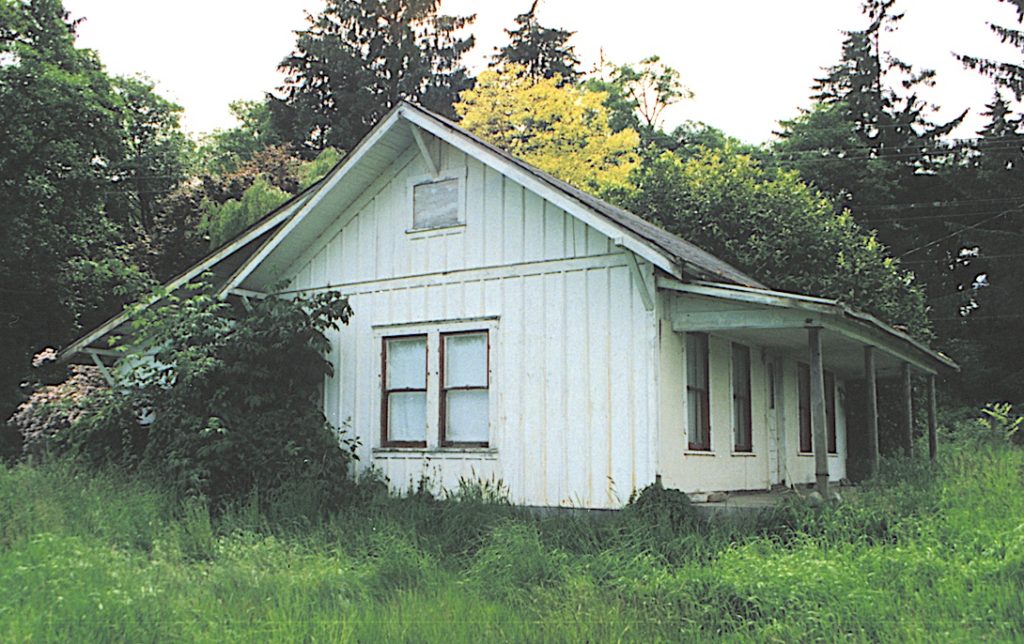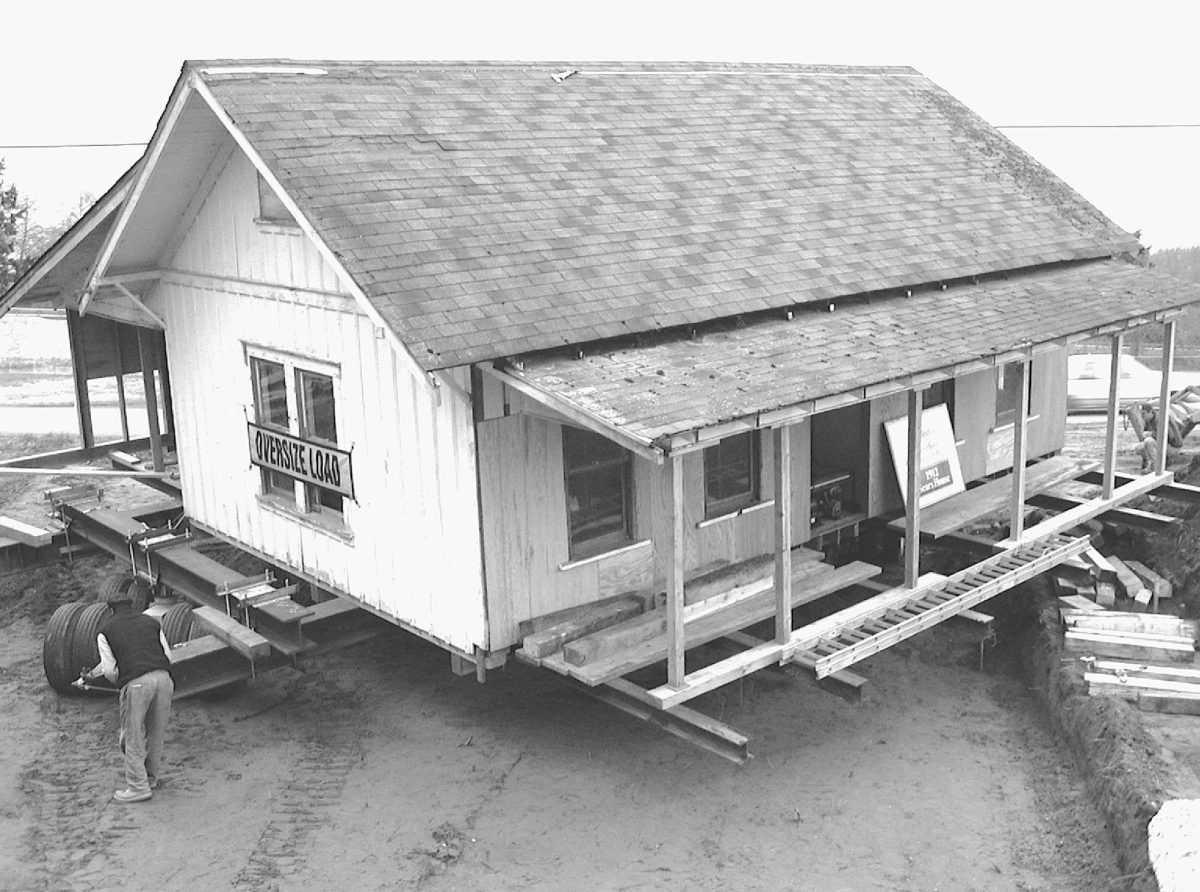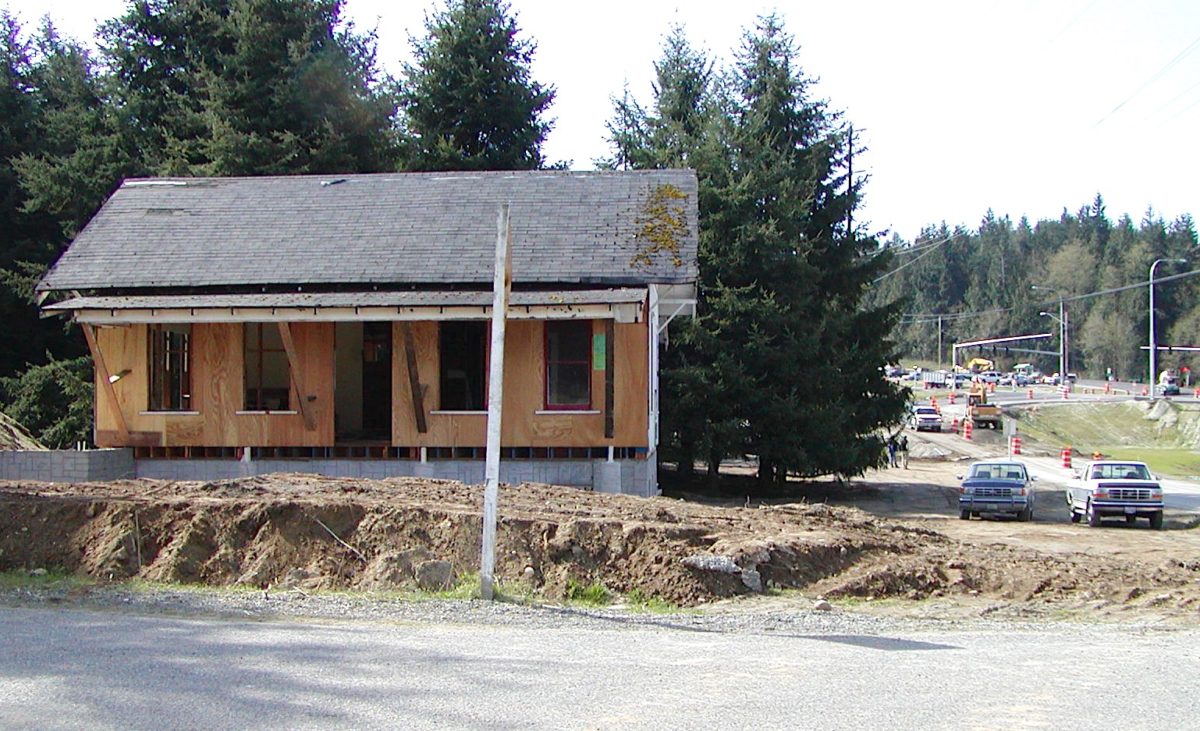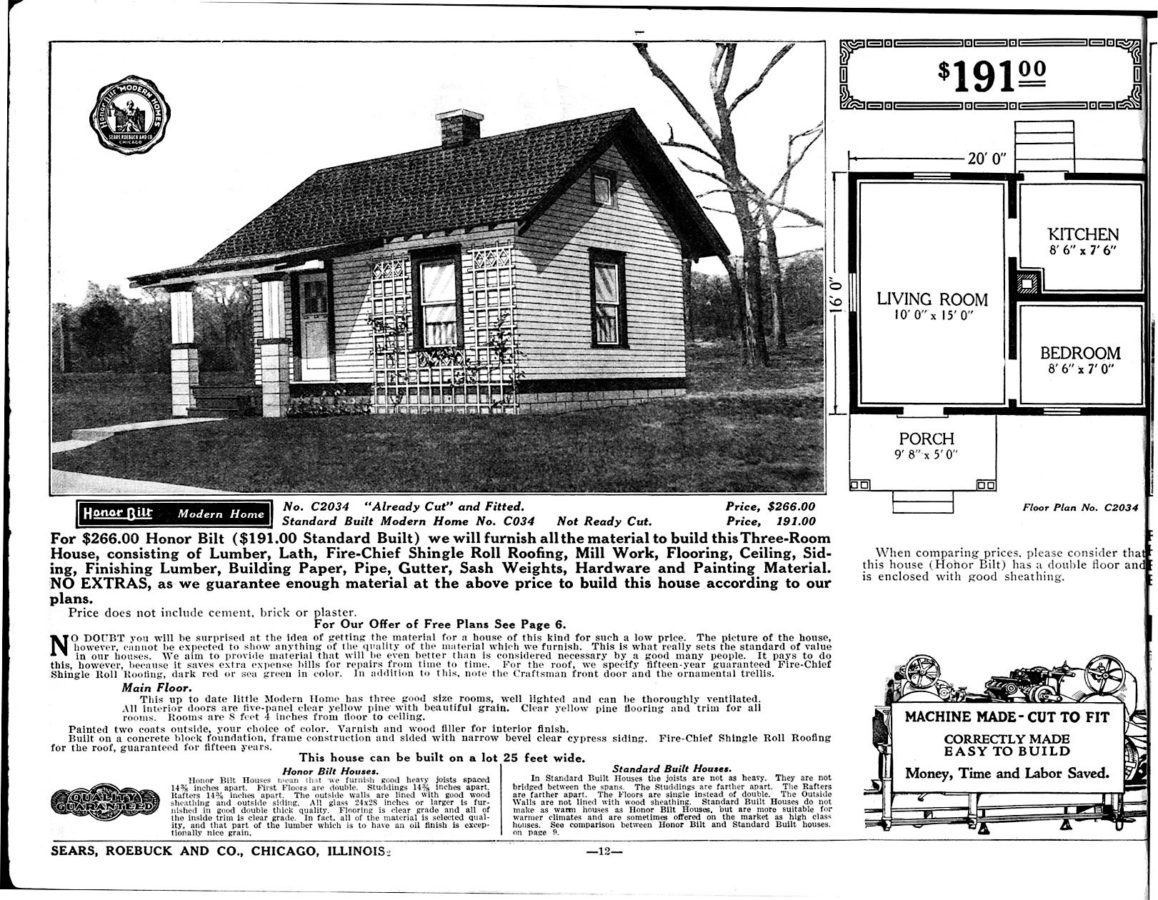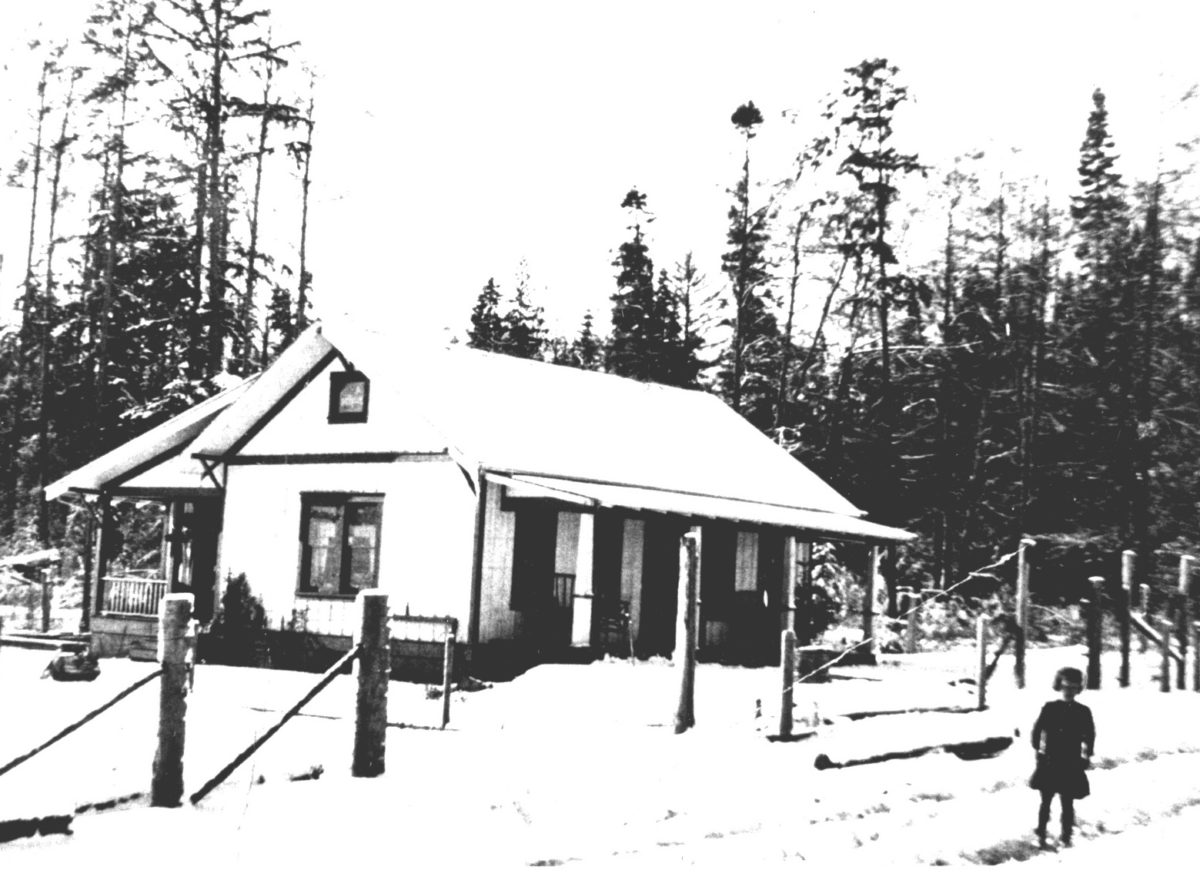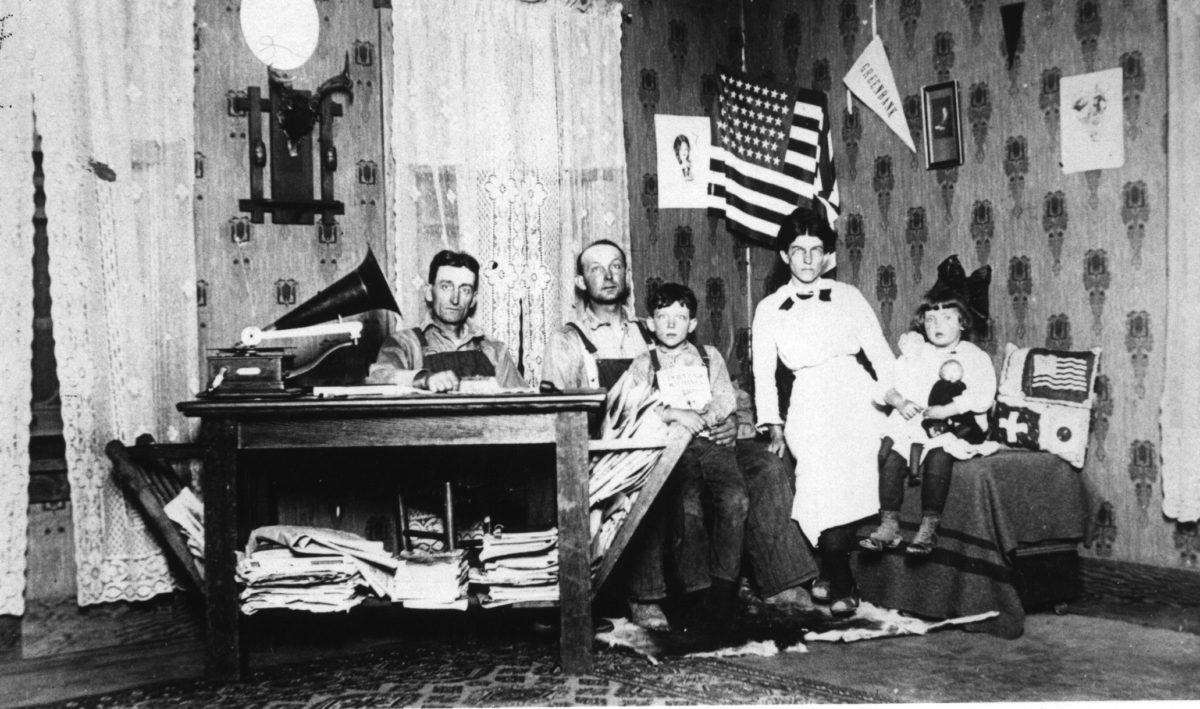Sears Kit House (1914)
Offered from 1908 to 1940, Sears Roebuck house plans and the required building materials were ordered through their catalogue. In 1914, one was erected in Greenbank, Whidbey Island.

Shipped by rail, the Sears kit houses arrived at remote locations with instructions, precut lumber, and nails. The kit also included supplies for plumbing, water, heating, masonry, doors, windows and screens. One such kit house found its way to Greenbank in 1914. Calvin Phillips, who developed Greenbank Farm, ordered his Sears house to serve as a farm worker’s cottage. The Sears House saw many families come and go over the next eighty years. In 1997, under threat of demolition to make way for the widening of Highway 525, the Island County Historical Society found safe haven for the home at Greenbank Farm.
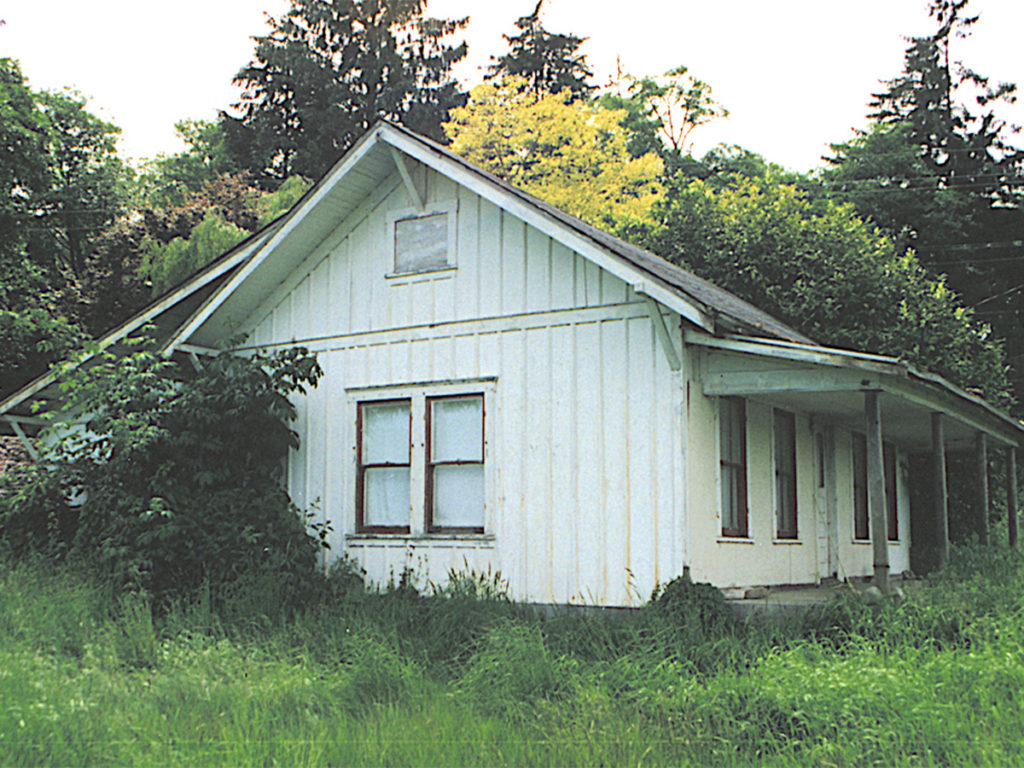
In 2001, plans to turn the Sears House into a visitor’s center for Greenbank Farm were still not realized and the structure could not stay on farm property. At the same time, Nancy Nordhoff and Goosefoot were redeveloping Bayview Corner, with an eye on preserving the architectural history of Whidbey Island. Saving the Sears House was taken on as a Goosefoot project.
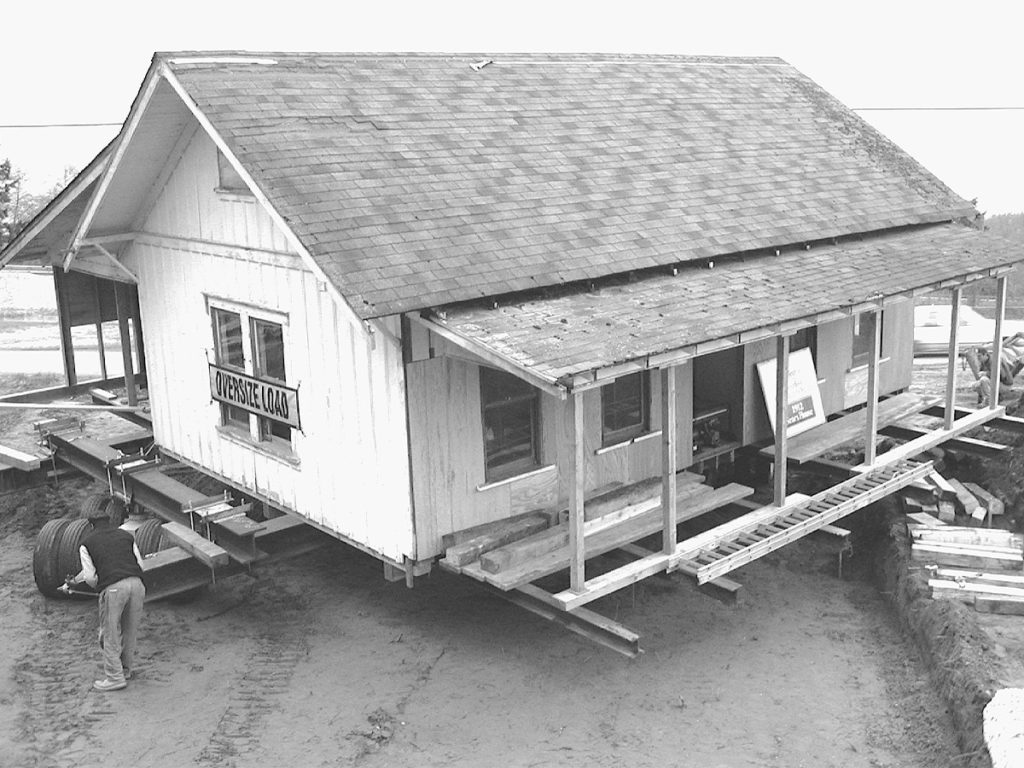
In the search for salvaged materials to use in the restoration of the Sears House, a redwood water tower about to be demolished was spotted by a construction crew member. Goosefoot salvaged the tank, re-milling the redwood and reforging the iron work for use as construction materials in the Sears House and the Cash Store. Other sustainable materials and technologies used with the Sears House include a “rastra” foundation and porous concrete parking lot.
Restored because of its historical significance on the Island, the Sears House is a powerful symbol of rural America’s continuing search for affordable housing.
The Sears House currently houses the offices of Emily Wandres, Lisa Fladager Body Soul Works, and Patrick Moll-Nevins Clinical Social Work, with a meeting space in the basement.
Sustainable Building Practices
- Rasta foundation/basement made from 83% recycled polystyrene
- Non-arsenic pressure-treated lumber
- Blow-in cellulose insulation
- Radiant concrete flooring with fly ash in the mix
- Low energy fluorescent light fixtures
- Pervious concrete parking lot and walkways
Reused and Salvaged Building Materials
- Re-milled redwood from the old Langley water tower was used for all the trim work, wainscoting, ceiling, handrails, door frames, bench, table and cabinetry
- 100-year-old lumber from a house in Ballard was used to fill in missing flooring
- All doors salvaged from the Coe Elementary School and other sources
- Salvaged mirrors from hotel medicine cabinets
- Repainted salvaged cabinetry downstairs
- Salvaged kitchen sink downstairs
- Original window frames with salvaged hardware and weights
- Window sashes and downstairs trim made from salvaged fir from a Bellingham warehouse
- Rain barrel made from a pickle barrel
- Bio-composite wainscoting and trim in upstairs bathroom made from recycled newsprint
- Salvaged exterior handrail
- Reused original roofing material and drywall
- Reused approximately one-half of the original siding and three-quarters of the original exterior window trim
- Salvaged parking stops
- One salvaged antique light fixture
- Mill shop sawdust used for mulch and in pathways
- Recycled job waste throughout
